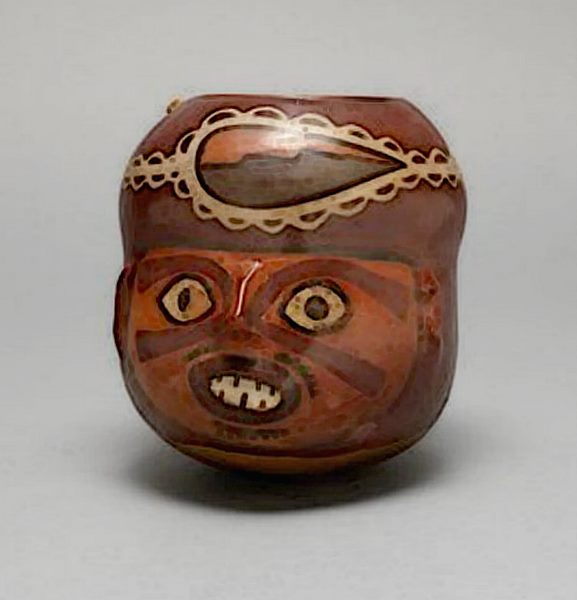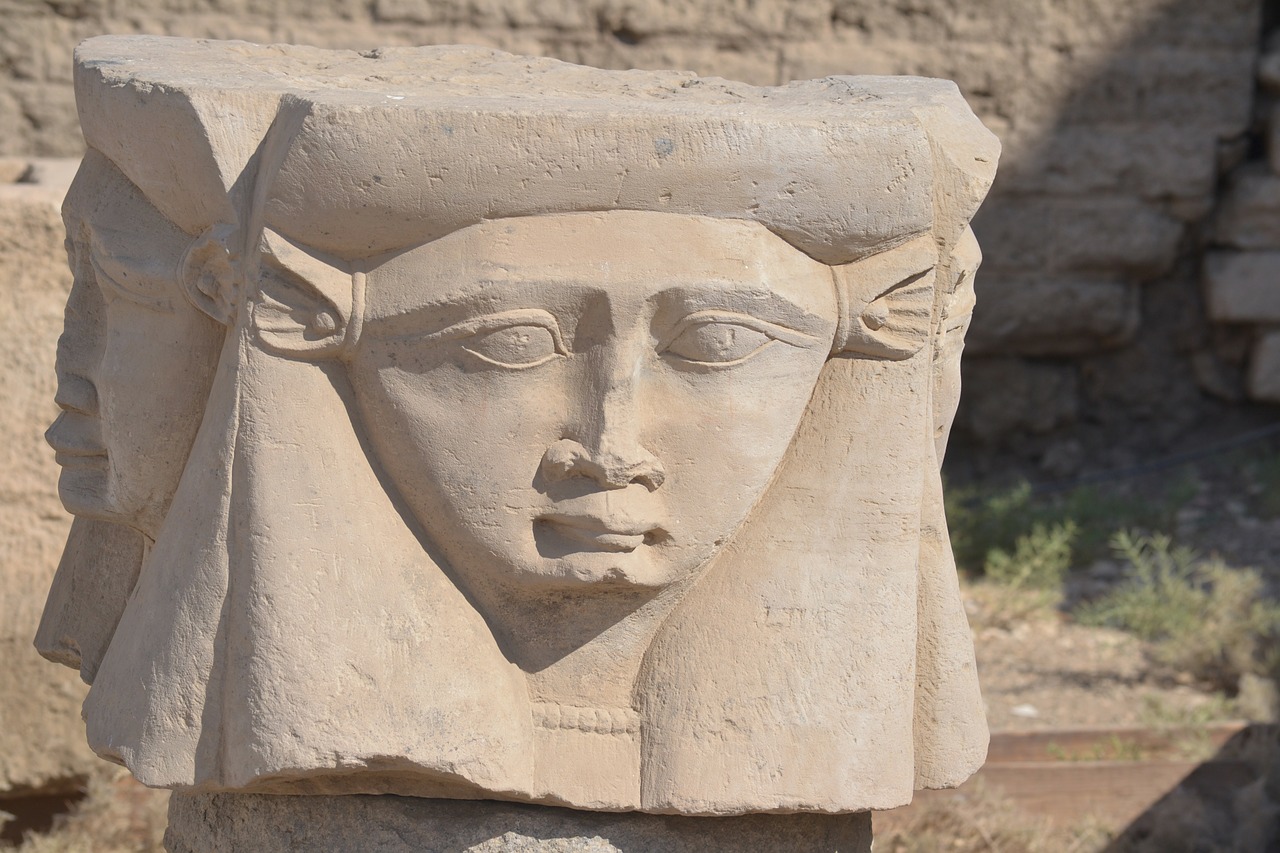
Vessel in the Form of a Human Head, Probably a Trophy Head. Creator: Nazca, South coast, Peru. Date: 180 B.C./A.D. 500. Object reference: 1957.616.
Hathor (Ancient Egyptian: ?wt-?r, lit.?’House of Horus’, Ancient Greek: ???? Hath?r, Coptic: ?????, Meroitic: ????? Atri/Atari) was a major goddess in ancient Egyptian religion who played a wide variety of roles. As a sky deity, she was the mother or consort of the sky god Horus and the sun god Ra, both of whom were connected with kingship, and thus she was the symbolic mother of their earthly representatives, the pharaohs. She was one of several goddesses who acted as the Eye of Ra, Ra’s feminine counterpart, and in this form she had a vengeful aspect that protected him from his enemies. Her beneficent side represented music, dance, joy, love, sexuality, and maternal care, and she acted as the consort of several male deities and the mother of their sons. These two aspects of the goddess exemplified the Egyptian conception of femininity. Hathor crossed boundaries between worlds, helping deceased souls in the transition to the afterlife.
Hathor was often depicted as a cow, symbolizing her maternal and celestial aspect, although her most common form was a woman wearing a headdress of cow horns and a sun disk. She could also be represented as a lioness, cobra, or sycamore tree.
Cattle goddesses similar to Hathor were portrayed in Egyptian art in the fourth millennium BC, but she may not have appeared until the Old Kingdom (c.?2686?2181 BC). With the patronage of Old Kingdom rulers she became one of Egypt’s most important deities. More temples were dedicated to her than to any other goddess; her most prominent temple was Dendera in Upper Egypt. She was also worshipped in the temples of her male consorts. The Egyptians connected her with foreign lands such as Nubia and Canaan and their valuable goods, such as incense and semiprecious stones, and some of the peoples in those lands adopted her worship. In Egypt, she was one of the deities commonly invoked in private prayers and votive offerings, particularly by women desiring children.
Author
imordaf (pixabay.com)
Courtesy Needpix.com
Links and References
-
- Medium.com Sam Azgor
